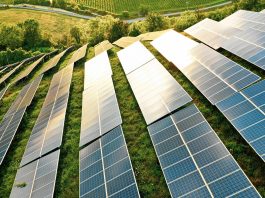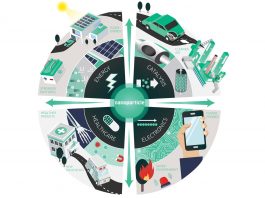Researchers at the Gwangju Institute of Science and Technology (GIST), South Korea, have discovered that introducing alkali metals into crystals of thin-film flexible solar cells can improve their efficiency.
In a paper published in Advanced Science, the team discusses how the amount of alkali metal introduced into crystals of flexible thin-film solar cells influences the path that charge carriers take to traverse between electrodes.
Professor Dong-Seon Lee from GIST, said: “When eco-friendly, inexpensive, versatile, and efficient solar cells are developed, all thermal and nuclear power plants will disappear, and solar cells installed over the ocean or in outer space will power our world.”
Doping polycrystalline solar cells with earth-abundant and eco-friendly alkali metals, such as sodium and potassium, can improve their light to electricity conversion efficiency while also leading to the creation of inexpensive flexible thin-film solar cells. Researchers at GIST have revealed, for the first time, why doping improves the efficiency of solar cells.
Upon analysing doped cells, Lee and his team saw that the amount of dopant determined the path that charge carriers took between electrodes, altering the conductivity of the cell. At an optimal doped-layer thickness of 25 nanometre, the charge flowed through the crystal via pathways that allowed for maximum conductivity. The team hypothesised that this affected the ‘fill factor’ of the cell, which indicates the light-to-electricity conversion efficiency. At 25 nanometres, a record fill factor of 63%. The overall performance was also competitive with this amount of doping.
These findings provide insight into the dynamics of polycrystalline solar cells, paving the way for further improvements. But the competitive performance of the solar cell that yielded these findings gives it real-world applications, as Professor Lee explains: “We have developed flexible and eco-friendly solar cells that will be useful in many ways in our real lives, from building-integrated photovoltaics and solar panel roofs to flexible electronic devices.”





